Osseointegration
What is Osseointegration?
Osseointegration is the firm anchoring of a surgical implant (as in dentistry or in bone surgery) by the growth of bone around it without fibrous tissue formation at the interface. This can be done in the femur, tibia, humerus, radius/ulna & digits.
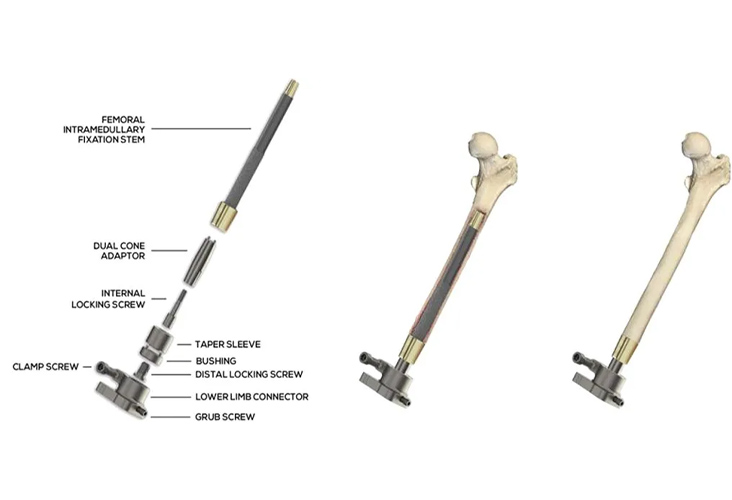
Advantages of Osseointegration Over Traditional Prosthetic Limbs?
- Improves mobility
- Improves proprioception or what is called osseoperception
- Typically will reduce nerve pain
- Eliminates problems associated with sockets
- Better physical control, energy transfer
- Can feel vibrations as it is connected to the bone
- Actually can tell when standing on uneven terrain
- Lower energy consumption
- Increase joint range of motion
- Allow more stability
Disadvantages of Osseointegration Over Traditional Prosthetic Limbs?
- Muscle/joint pain during the healing phase/walking do to soft tissue reconstruction, Using different muscles
- Aperture infection which is the interface between implant and soft tissue.
- Infections are common but not serious typically controlled by oral antibiotics.
- over granulation/irritation which is overgrowth of skin at aperture site, fixed with surgery.
- Deep tissue infection with signs of drainage or build up of fluid within soft tissue usually IV antibiotics are needed
- Implant loosening which is very rare
- Bone infection very rare will need to be removed and can be replaced after infection goes away
- Implant breakage very rare but has occurred do to wrong implant size or patient fault
- Bone fracture has occurred but usually above implant, osteoporosis
- Tissue retraction which is seen more in in single stage surgeries
Two Approaches To Osseointegration Surgery
First is the original screw-fixation system, the Osseoanchored Prosthesis for rehabilitation of Amputees(OPRA) Implant System. Manufactured by Integrum AB In Molandal, Sweden. Only available with transfemoral amputees and is performed via a two stage technique with six months in between 1st and 2nd stage. (Uses a hollow implant that takes longer for Osseointegration bone formation to fill cavity.)
Second is the press fit implants that are manufactured by various countries like the Dutch and Aussies. This allows for immediate implant stability allowing earlier weight bearing activities. Performed on both AKA’s and BKA’s. (Uses a solid core that is porous coated which allows for bone and structure to be one.)
Rehabilitation
OPRA SYSTEM – screw fixation
1st stage
Implant Only
- Includes a 2-3 stay in hospital after 1st surgery
- 6 months of non-weight bearing
- Between 1st & 2nd stage patient can wear a socket but it is rare
2nd Stage
Creating aperture and soft tissue rearrangement
- Includes a 7 day stay in hospital
- 6 weeks of non weight bearing and limited hip range of motion
- Goal is to have patient walking 1yr from 1st stage procedure
Rehabilitation After Surgery
PRESS FIT SYSTEM
1st Stage
- 2-3 day hospital stay after 1st stage
- Non weight bearing for 6 weeks
- Soft tissue rearrangement
- Cannot use a traditional socket
2nd Stage
- Creating aperture and some soft tissue rearrangement
- Same day surgery
- Followed by partial weight bearing using a scale to full time weight bearing using prosthesis
- Sometimes will do the procedure in one stage but there could be difficulties(skin retraction, infection, hypergranulization, most importantly doesn’t give the soft tissue time to recover and mature)
Advantages of Osseointegration Over Traditional Prosthetic Limbs?
- Improves mobility
- Improves proprioception or what is called osseoperception
- Typically will reduce nerve pain
- Eliminates problems associated with sockets
- Better physical control, energy transfer
- Can feel vibrations as it is connected to the bone
- Actually can tell when standing on uneven terrain
- Lower energy consumption
- Increase joint range of motion
- Allow more stability
Disadvantages of Osseointegration Over Traditional Prosthetic Limbs?
- Muscle/joint pain during the healing phase/walking do to soft tissue reconstruction, Using different muscles
- Aperture infection which is the interface between implant and soft tissue.
- Infections are common but not serious typically controlled by oral antibiotics.
over granulation/irritation which is overgrowth of skin at aperture site,fixed with surgery. - Deep tissue infection with signs of drainage or build up of fluid within soft tissue usually IV antibiotics are needed
- Implant loosening which is very rare
- Bone infection very rare will need to be removed and can be replaced after infection goes away
- Implant breakage very rare but has occurred do to wrong implant size or patient fault
- Bone fracture has occurred but usually above implant, osteoporosis
- Tissue retraction which is seen more in in single stage surgeries
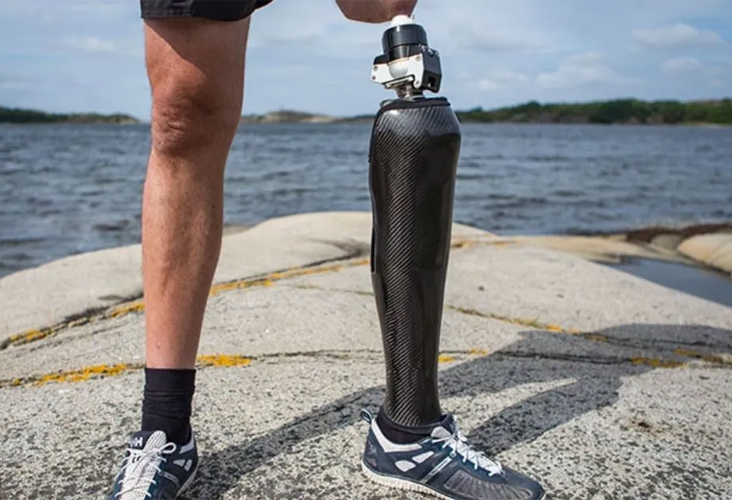
From Physical Rehab Prospective
To Manage Soft Tissue Pain Control
- Pendulums
- Offloading weight through arms
- Bike with no resistance
Main Principles Guiding Press Fit Osseointegration and Optimizing Rehab
- Must achieve 2 point gait pattern
- Accomplished by using crutches and moving onto walking sticks
- Important to have lateral pelvic weight shift during stance phase
From Physical Rehab Perspective
Why Do We Recommend Bilateral Assistive Devices?
- Neurological principles
- Optimized biomechanics
- Improved weight shift over prosthetic side
From Prosthetist Prospective
Regular Servicing Every 3 Months Should Consist of Checking
- Tightness of dual cone screw
- Tightness of taper sleeve screw
- Taper sleeve removed and inspected will also allow for easier removal if it needs to be replaced
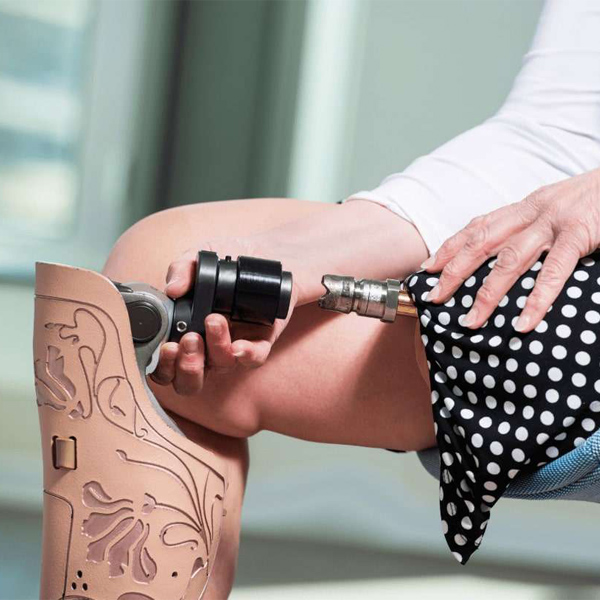
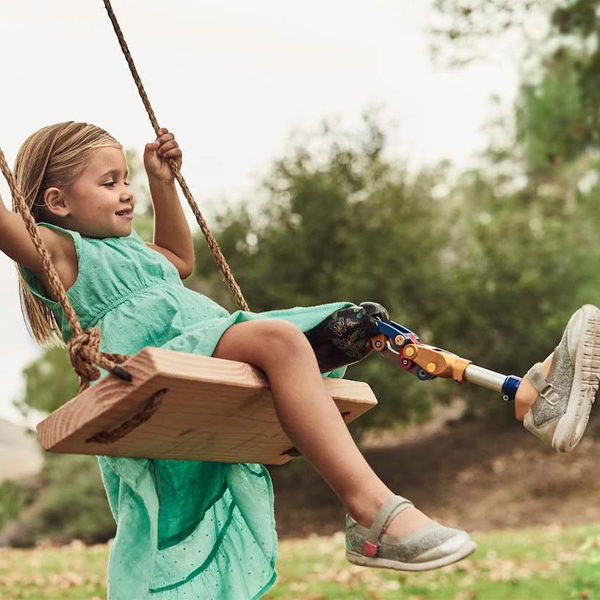
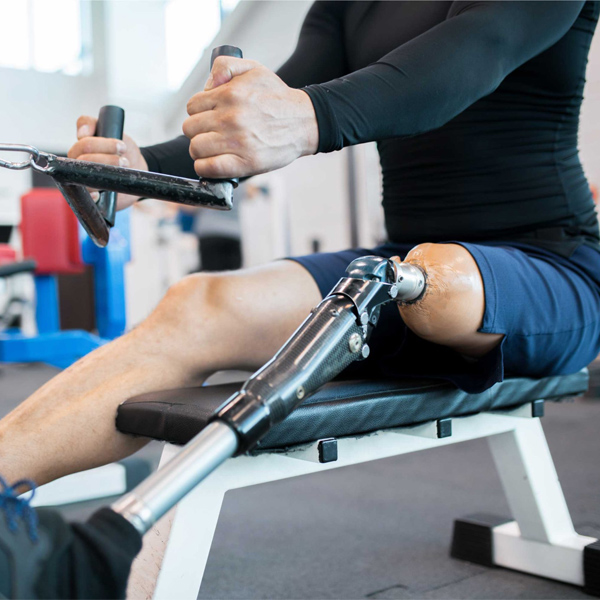
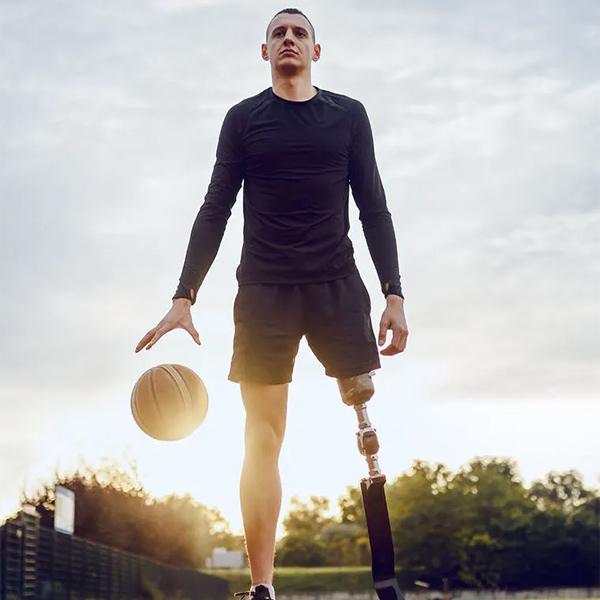
Frequently Asked Questions
DISCOVER THE POTENTIAL OF INNOVATIVE PROSTHETICS
From minor to severe injuries, our team develops advanced devices designed to support recovery and promote overall wellness.
